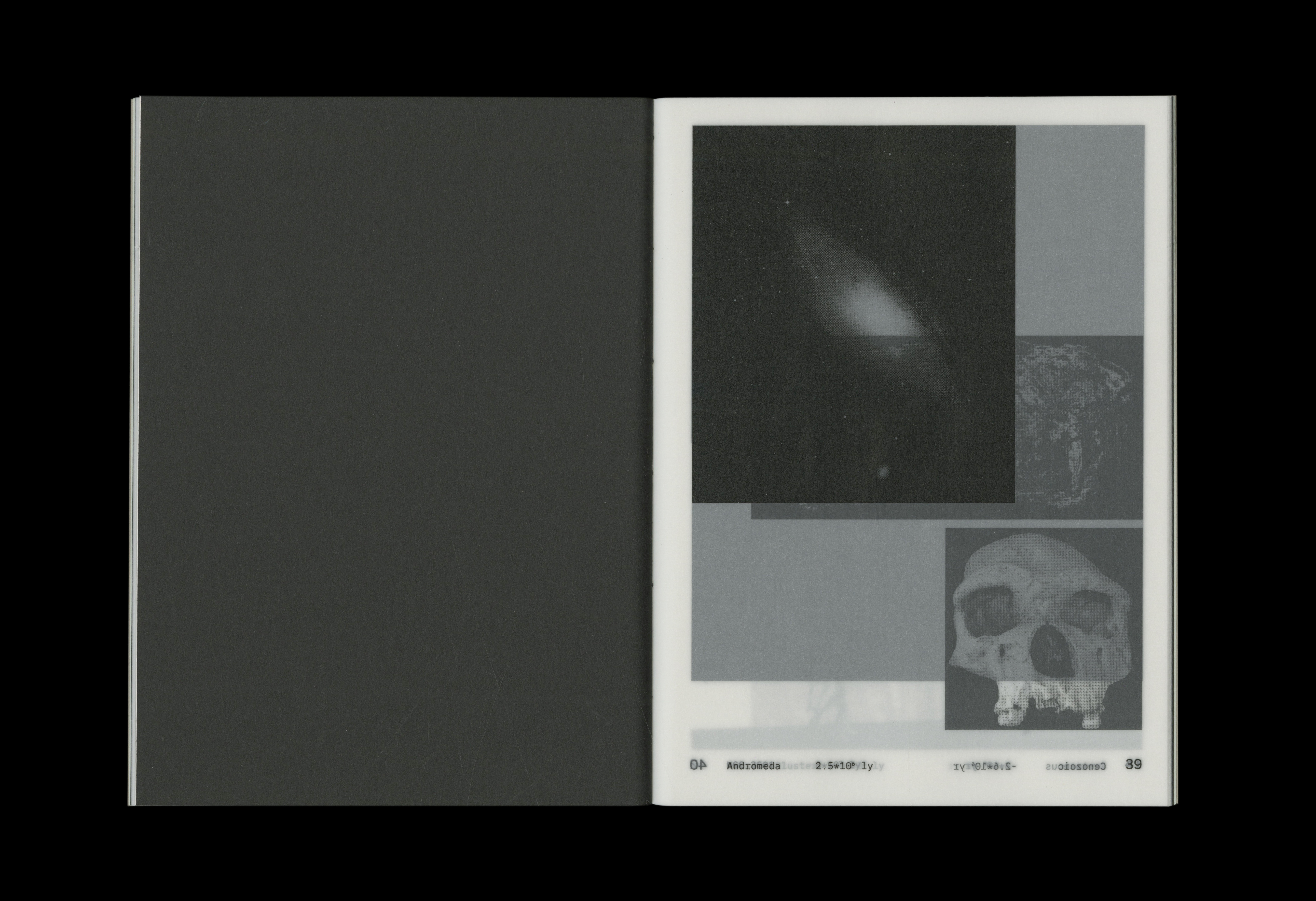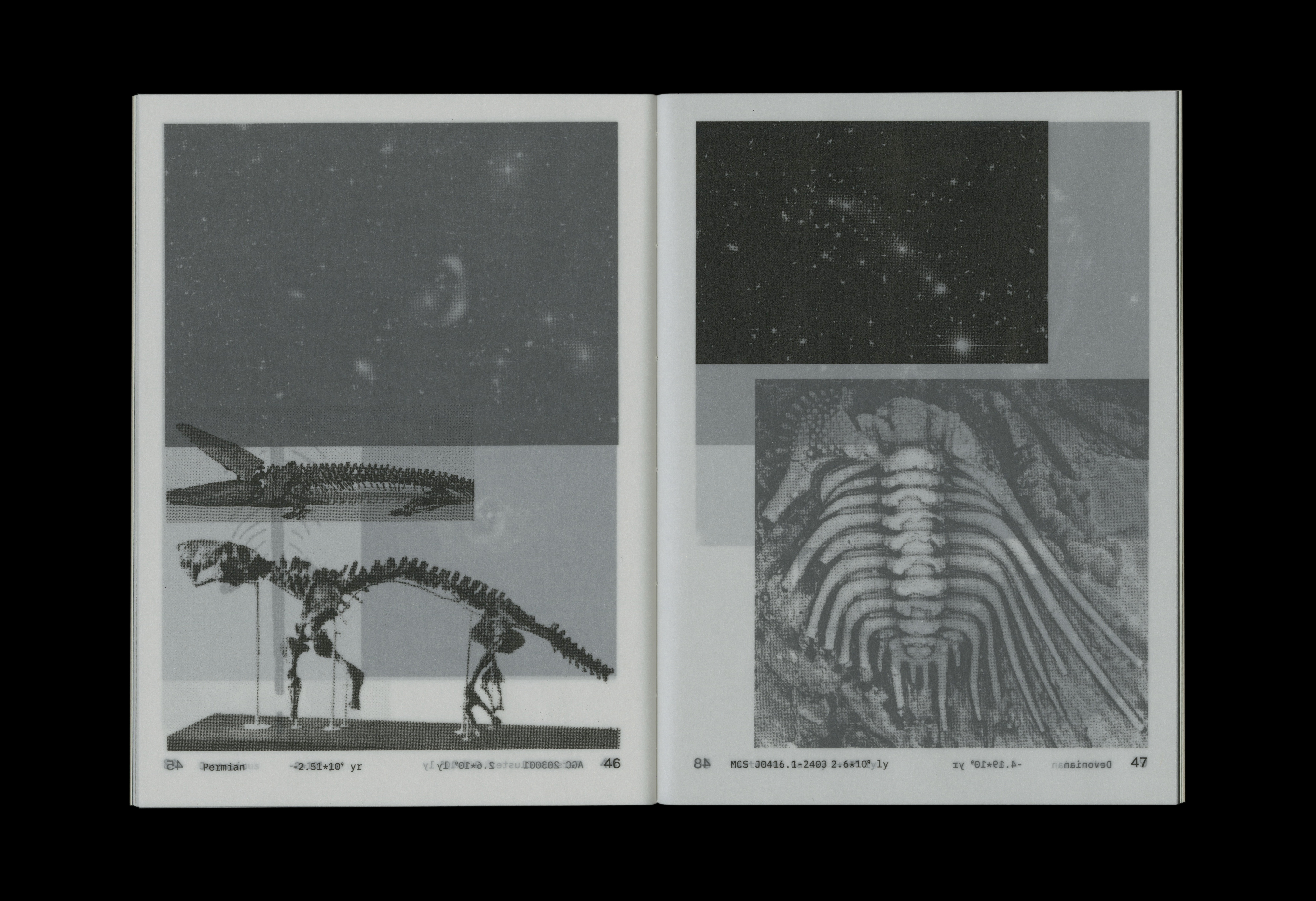


















2023
∵ PROJECT
Concept, Design, Execution: K.Chen
Head of Department: Maaike van Neck
Coordinator: Patricia Bosveld
Supervisor: Donna Verheijden, Jeremy Jansen, Joris Maltha, Monika Gruzite, Remco van Bladel
Special Thanks: Annegien Schilling, Benjamin McMillan, Jonas Riemersma, PW Chang, TK Liao, Uus Offerhaus,
Weiquarter, Yaya Huang
Mental Support: CF Tsay, Kasper Quaink, Mama Chen
∵ BOOK
Text: K.Chen
Text Editing: Ismael Abderrahim Arribas
Imagery Editing: K.Chen
Technical Support: Sjoerd van Ree, Tofe Al-Obaidi
Typefaces: Hiragino Sans, IBM Plex Mono
Paper: Curious Matter 135 gr, ColorAction Iceland 80 gr, Trophee Zwart 80 gr, Recystar 80 gr, Cromatico 90
gr
Print: @ArtEZ CannonUpstairs
Binding: Saddle Stitch Binding
Concept, Design, Execution: K.Chen
Head of Department: Maaike van Neck
Coordinator: Patricia Bosveld
Supervisor: Donna Verheijden, Jeremy Jansen, Joris Maltha, Monika Gruzite, Remco van Bladel
Special Thanks: Annegien Schilling, Benjamin McMillan, Jonas Riemersma, PW Chang, TK Liao, Uus Offerhaus, Weiquarter, Yaya Huang
Mental Support: CF Tsay, Kasper Quaink, Mama Chen
∵ BOOK
Text: K.Chen
Text Editing: Ismael Abderrahim Arribas
Imagery Editing: K.Chen
Technical Support: Sjoerd van Ree, Tofe Al-Obaidi
Typefaces: Hiragino Sans, IBM Plex Mono
Paper: Curious Matter 135 gr, ColorAction Iceland 80 gr, Trophee Zwart 80 gr, Recystar 80 gr, Cromatico 90 gr
Print: @ArtEZ CannonUpstairs
Binding: Saddle Stitch Binding
If You Stand Far Away Enough, You Can Still See the Dinosaurs.
The launch of the Soviet Union’s Sputnik 1, the first artificial satellite, in 1957 marks the inception of
human space navigation, heralding the dawn of the Space Age. Subsequent milestones include Yuri Gagarin’s
historic orbital flight in 1961 and the transcendental Apollo moon missions of the late 1960s. The advent of
the Space Shuttle program in 1981 revolutionized space travel, while the International Space Station, launched
in 2000, stands as a symbol of international collaboration in space.
Based on their designated objectives and operational functions, spacecrafts can be classified into three
distinct roles: Capturer, Navigator, and Explorer. These categorizations are derived from the various purposes
and actions undertaken by spacecrafts.
> Capturer_Space Telescope
Persistently executing its mission within a trajectory encompassing a celestial expanse situated 54 km above
the terrestrial plane, this system engages in the reception of spatial imagery. Subsequently, it transmits the
acquired visual data back to the terrestrial observation station.
> Navigator_Artificial Satellite
Operating at an elevation of 2000 km, akin to the role of a mirror, it assumes a position to relay
comprehensive terrestrial data back to the observation station.
> Explorer_Space Probe
Embodying the spirit of discovery by venturing into uncharted frontiers realms of the cosmos, and heading
towards the end of the void. They utilize advanced scientific instruments to probe distant celestial bodies
and study their atmospheric compositions.
The transparency and the position of the monitors in the installation were inspired both by the relationship
between data transmission and the spacecrafts, and by the idea of observing and viewing. The height and
positions at which the monitors are held shape the postures of the audience’s engagement. From looking up and
admiring [stargazer], to zooming in and inspecting [astronomer], the audience is compelled to engage with each
monitor in the installation as they would with a fragment of a distant sky.
The launch of the Soviet Union’s Sputnik 1, the first artificial satellite, in 1957 marks the inception of human space navigation, heralding the dawn of the Space Age. Subsequent milestones include Yuri Gagarin’s historic orbital flight in 1961 and the transcendental Apollo moon missions of the late 1960s. The advent of the Space Shuttle program in 1981 revolutionized space travel, while the International Space Station, launched in 2000, stands as a symbol of international collaboration in space.
Based on their designated objectives and operational functions, spacecrafts can be classified into three distinct roles: Capturer, Navigator, and Explorer. These categorizations are derived from the various purposes and actions undertaken by spacecrafts.
> Capturer_Space Telescope Persistently executing its mission within a trajectory encompassing a celestial expanse situated 54 km above the terrestrial plane, this system engages in the reception of spatial imagery. Subsequently, it transmits the acquired visual data back to the terrestrial observation station.
> Navigator_Artificial Satellite Operating at an elevation of 2000 km, akin to the role of a mirror, it assumes a position to relay comprehensive terrestrial data back to the observation station.
> Explorer_Space Probe Embodying the spirit of discovery by venturing into uncharted frontiers realms of the cosmos, and heading towards the end of the void. They utilize advanced scientific instruments to probe distant celestial bodies and study their atmospheric compositions.
The transparency and the position of the monitors in the installation were inspired both by the relationship between data transmission and the spacecrafts, and by the idea of observing and viewing. The height and positions at which the monitors are held shape the postures of the audience’s engagement. From looking up and admiring [stargazer], to zooming in and inspecting [astronomer], the audience is compelled to engage with each monitor in the installation as they would with a fragment of a distant sky.